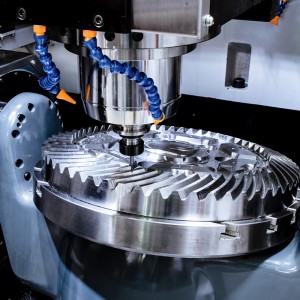Brief Introduction of Titanium Materials
Information of Titanium
| Features | Info |
| Subtypes | Grade 1 Titanium, Grade 2 Titanium |
| Process | CNC machining, sheet metal fabrication |
| Tolerance | With drawing: as low as +/- 0.005 mm No drawing: ISO 2768 medium |
| Applications | Aerospace fasteners, engine components, aircraft components, marine applications |
| Finishing Options | Media Blasting, Tumbling, Passivation |
Available Stainless steel Subtypes
| Subtypes | Yield Strength | Elongation at Break | Hardness | Corrosion Resistance | Maximum Temp |
| Grade 1 Titanium | 170 – 310 MPa | 24% | 120 HB | Excellent | 320– 400 °C |
| Grade 2 Titanium | 275 – 410 MPa | 20 -23 % | 80–82 HRB | Excellent | 320 – 430 °C |
General Information for Titanium
Previously used only in state-of-the-art military applications and other niche markets, improvements to titanium smelting techniques has seen use become more widespread in recent decades. Nuclear power plants make extensive use of titanium alloys in heat exchangers and especially valves. In fact the corrosion resistant nature of titanium means they do believe that nuclear waste storage units lasting 100,000 years could be made from it. This non-corrosive nature also means titanium alloys are widely utilised in oil refineries and marine components. Titanium is entirely non-toxic which, combined with its non-corrosive nature, means it is used for industrial scale food processing and in medical protheses. Titanium is still in high demand within the aerospace industry, with many of the most critical parts of the airframe made from these alloys in both civilian and military aircraft.
Call on Guan Sheng staff to recommend the right materials from our rich selection of metal and plastic materials with different colors, infill, and hardness. Every material we utilize comes from reputable suppliers and is thoroughly inspected to ensure they can be matched to various manufacturing styles, from plastic injection molding to sheet metal fabrication.








